This article will show you how to split fish heads into two clean halves and then into further small pieces, the way you might see sold in a Japanese supermarket. The technique is used in both the simmered kinmedai head dish and in the restaurant’s akadashi miso soup dish and therefore I thought it would be important to go into more detail on how to do it properly. It’s also a very important way to process and utilise the heads from fish after filleting and is used in simmered or soup dishes. With this technique, you’ll be able to split heads that are notoriously hard to break through such as Tai and Kochi.
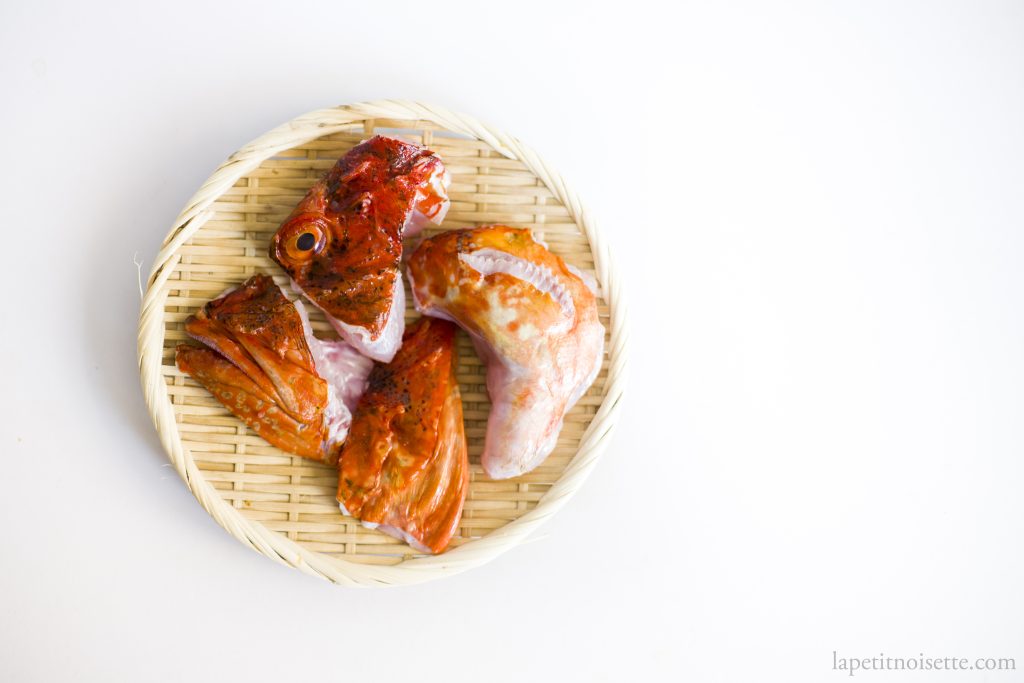
In Japanese, this technique is called kabuto-wari (兜割り) or nashi-wari (梨割り). Directly translating into helmet splitting or pear splitting, I’ve been told that this name comes from the way you would split helmets to kill the enemy during sword fights. It is done by cutting heads directly into two clean halves through the forehead, splitting the skull into two, a task that takes significant skill and a very sharp knife. I
t’s often said in Japanese kitchens that the most crucial step when doing this is to cut straight down the middle of the fish head, as any slight deviation from the middle will be amplified as you force the knife down to split the skull which will result in an uneven split as well as a lot more force to cut through the skull. Because of this, you want to centre the blade of the knife directly in the centre of the head before pushing it in. When choosing which knife to use, most people will also recommend a heavy double bevel knife as single bevel knives tend to veer to one side when pushed down even if positioned correctly at the start, causing an uneven head split.
At the restaurant I worked at, we always used a Japanese deba to fillet our fish, before switching over to a double bevelled western chef knife to split the heads. I personally found this harder as a western chef knife isn’t as thick and doesn’t have the weight of a Japanese deba so I just used the deba the whole way through. At home, I use my deba to split the head as I’m alright with a slightly uneven spread, before using a chinese cleaver to finish off the split. Make note, you are forcing your knife through bone so please do not use your precious honyaki knives on this, or any thin knives.
If possible, I recommend cutting out the gills from the fish head before splitting it as the pressing action on the fish tends to squeeze out blood and impurities from the gills which sometimes gives the head a slightly bitter taste. You’d also want to give the inside of the head a good clean with an old toothbrush after splitting it to remove any solidified blood or dirt.
Kabutowari (兜割り) technique
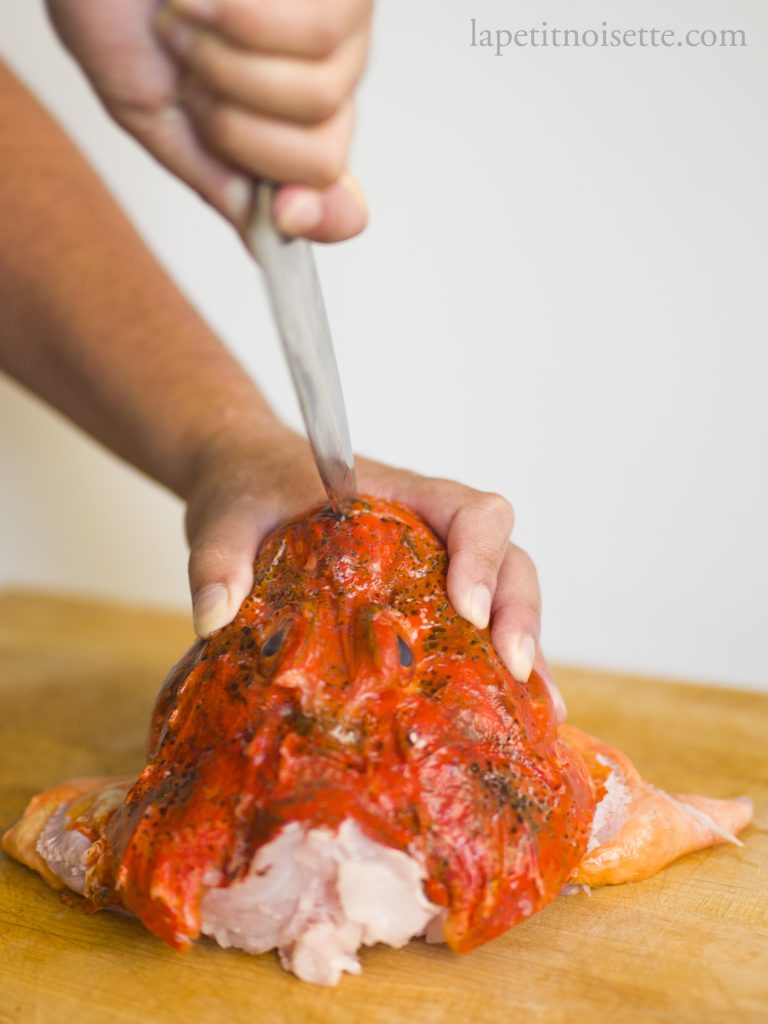
- Place the fish head on a chopping board standing up so that the fish mouth is facing towards the sky. With the knife blade facing towards the upper jaw and the dull edge facing towards the lower jaw, position the blade inside the mouth, directly in the centre of the head. (A tip to do this is to count the number of teeth the fish has, and then position the knife between the middle two teeth of the fish)
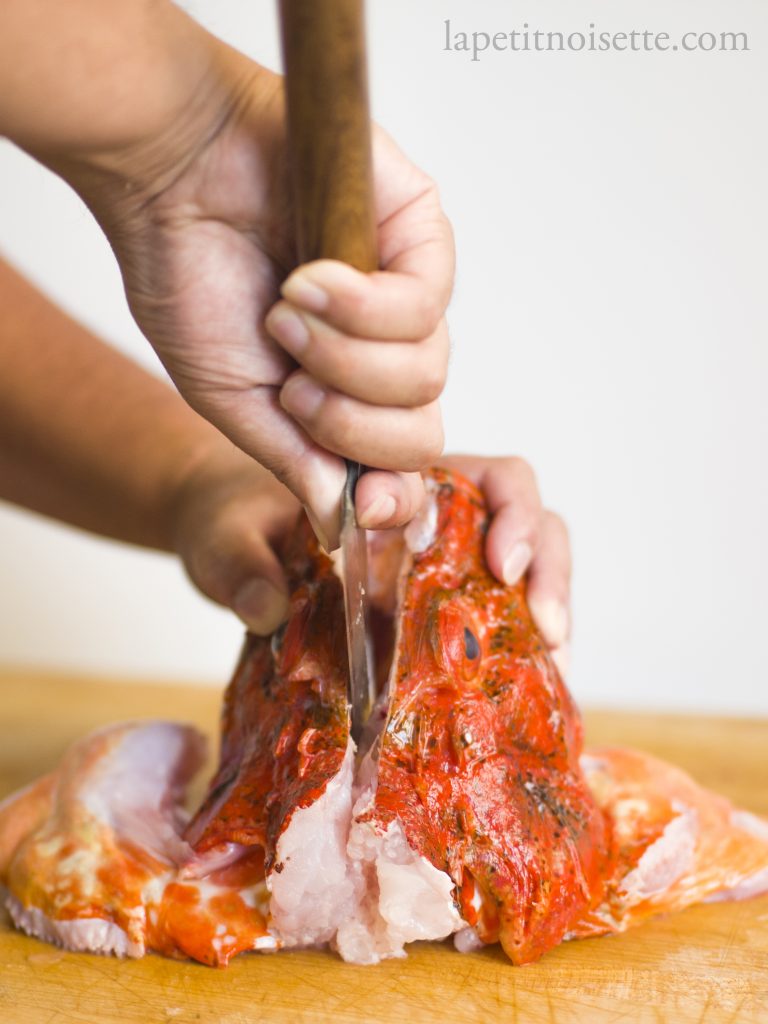
- With your hand supporting the lower jaw, push the knife down into the chopping board, cutting into the upper jaw so that the entire knife fits into the mouth and the tip of the knife touches the chopping board below. It’s important at this point that your grip on the knife and fish head feels stable.
- Using the tip of the knife as a pivot point/fulcrum, press the knife downwards, cutting through the upper jaw and through the forehead of the fish until the whole blade of the knife touches the chopping board. This should be done in one continuous motion, breaking through the skull all at once. Be sure that everything is stable and that the knife and head do not slip on the cutting board. Also make sure that your other hand is supporting the bottom jaw of the fish and your fingers are out of the path of the knife blade.
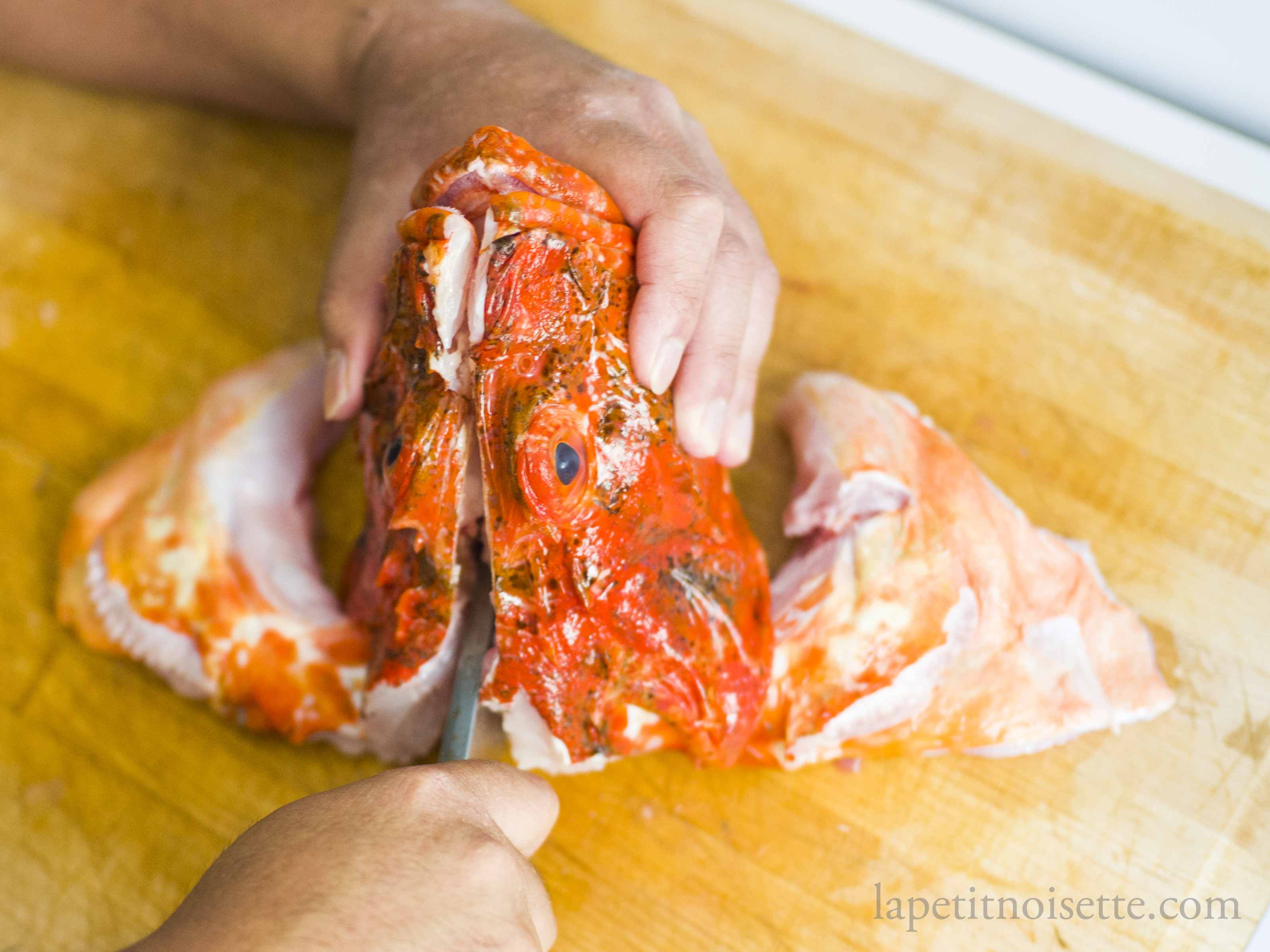
- The head should be split down the forehead at this point, with the two halves held together by the lower jaw. Separate the two halves by splitting the lower jaw, either by cutting through it with a heavy knife or by chopping it with a cleaver. You should now have separate halves of the head.
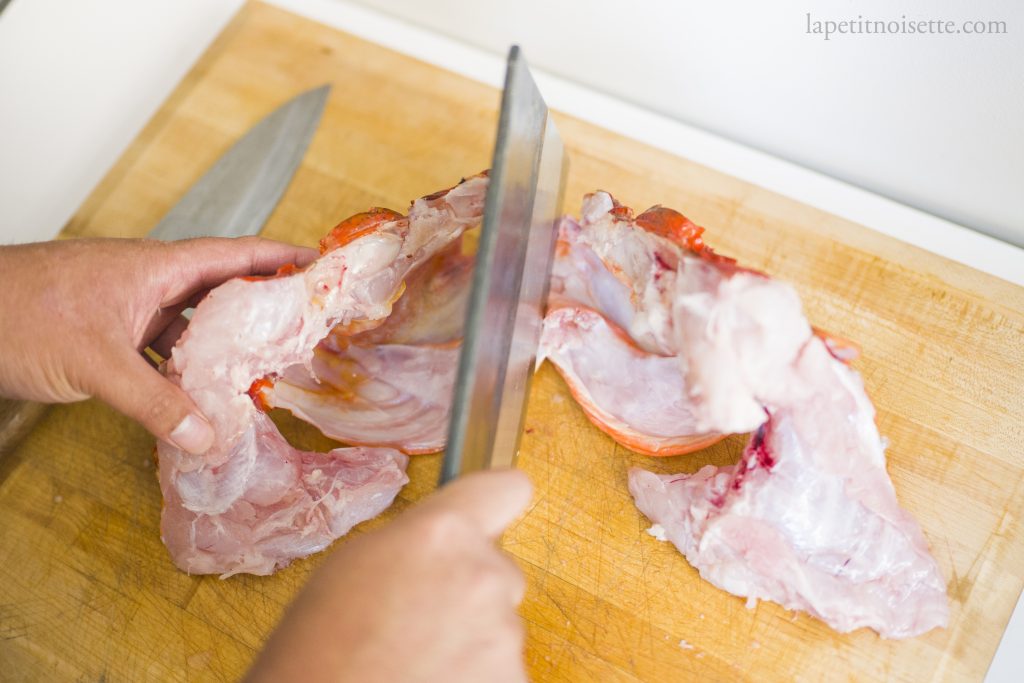
- Flip the heads over and clean any blood or dirt inside with an old toothbrush. At this point, the heads are good to go for grilling and stocks but if you want to add them to soup, I recommend breaking them down further.
- In stores, this is typically sold with the head broken down into four sections: the collar, the gill flap, the mouth and the eyes with foreheat. See the picture for reference. To do this, you can either use a heavy duty kitchen scissors to cut up the head, chop it up with a cleaver or cut it with a deba which is my favourite method. To do this, first cut off the collar of the fish to obtain the first piece, before laying the fish head half flat down on the cutting board.
- Press the tip of the knife into the centre of the fish head and bring the knife blade down between the mouth and eyes, just as you would a paper guillotine. Use your other hand to press down the back of the blade until it cuts through. Repeat until you get the other three pieces.
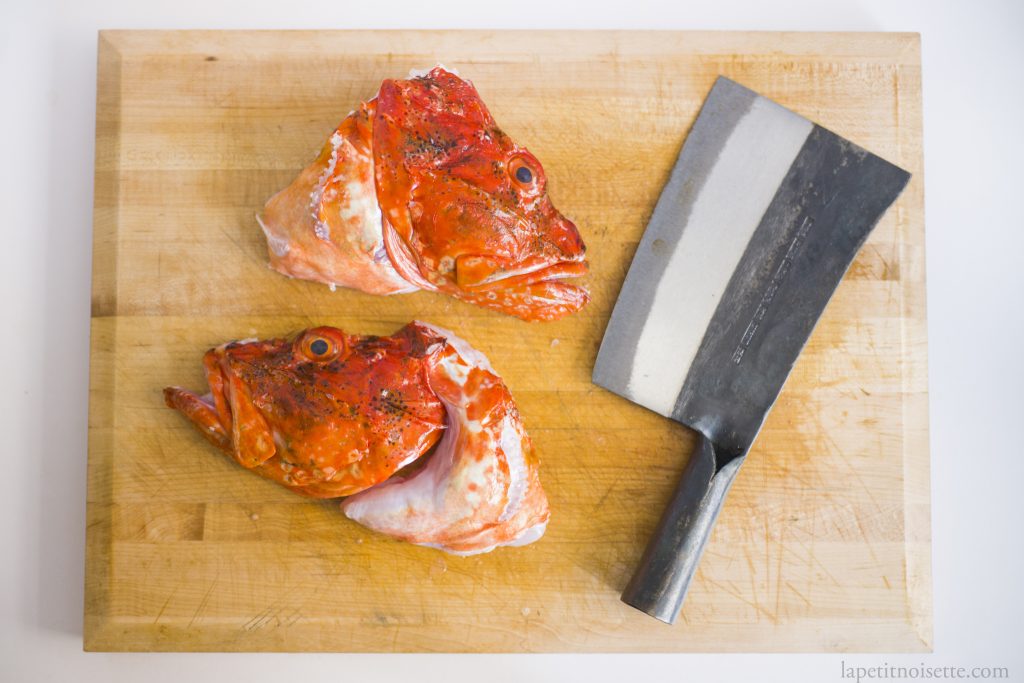
*I’ve also been told before (on numerous occasions), that it’s easier to split heads in half if you do it exactly in the middle as there is a weak line directly down the centre as it’s where the left half and right half of the body meet and so it is easy to split. From a biological perspective, I don’t think this general belief holds but if you find evidence otherwise, do please leave a comment.